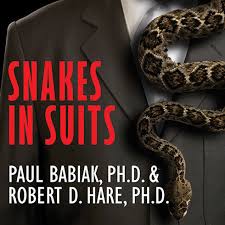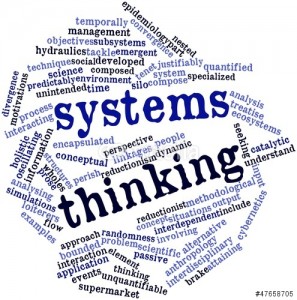Ladies and gentlemen (cue drum roll)! Here it is; Johannes de Berlaymont’s first big excavation. What sort of jobs are there to be had in the European Union’s institutions and agencies, and how do you get one? This book tells all, but much, much more! It explains the crucial difference between being selected and being recruited, why traineeships are so important (and how you can get one), why networks are so important (and how you can grow your own), and it even provides you with a philosophical approach to the endeavour. Order your copy now!
A Garbage Can Model of Organizational Choice (Michael D. Cohen, James G. March and Johan P. Olsen)

Organizations are, by definition, organized – typically, through hierarchical structures. Managers of organizations lead by taking rational decisions in response to well-defined situations and on the basis of clearly-established preferences. Management is relatively stable and managerial decisions are implemented through clear lines of command and authority. Right? In 1972, three young Stanford-based organization theorists had the temerity to publish an article (‘A Garbage Can Model of Organizational Choice’, Administrative Science Quarterly, Vol. 17, N° 1, March 1973, pp. 1-25) in which they argued that the correct answer, most of the time, is ‘wrong’. They based their argument on three simple assumptions about organizations. The first is that in many organizations preferences tend to be unclear and inadvertently ‘discovered’ through action (or reaction). The second is what they call ‘unclear technology’, by which they mean that many organizations’ processes are not understood by their members. Such organizations tend to act through ‘pragmatic inventions of necessity’ as much as anything else. The third assumption is ‘fluid participation’, by which they mean that participants in decisions ‘vary in the amount of time and effort they devote to different domains’ and the participants, and their involvement, ‘vary from one time to another.’ The result, the authors argue, is that ‘the boundaries of the organization are uncertain and changing; the audiences and decision makers for any kind of choice change capriciously.’ Organizations that satisfy these three conditions – problematic preferences, unclear technology and fluid participation – are, they declare ‘organized anarchies’. This may sound like a contradiction in terms, but the article explains why it isn’t. Indeed, they argue that such organized anarchy is characteristic of any organization in part, at least part of the time, though it is particularly conspicuous in public organizations. In a famous and much-quoted passage, they further argue that such organizations can be viewed: ‘as collections of choices looking for problems, issues and feelings looking for decision situations in which they might be aired, solutions looking for issues to which they might be an answer, and decision makers looking for work.’
Seeing Like a State (James C Scott)

American (Yale) political scientist and anthropologist James C. Scott (b. 1936) has spent most of his academic career examining agrarian societies and the way in which these both resist and survive. His early studies of Vietnamese and South East Asian peasants were gradually extended to other parts of the world and, reading between the lines, these studies gave him an enduring appreciation of the importance of local know-how, typically evolved over many centuries. Scott’s 1998 monograph, Seeing Like a State: How Certain Schemes to Improve the Human Condition Have Failed, is a magisterial and highly enjoyable, if meandering, attempt to extrapolate from his observations to produce both a critique of what he terms ‘high modernism’ and a plea for a more measured approach that he terms ‘metis’. At times, Seeing Like a State reads like a polemic and, like most polemics, at times its case is exaggerated. But Seeing Like a State is nevertheless an absorbing and illuminating read for anybody involved in management, whether in the private or the public sector, and particularly for those involved in change management and the enhancement of an organisation’s overall ‘performance’, for Scott’s work is about far more than the subtitle would imply.
Snakes in Suits (Paul Babiak and Robert D. Hare)

Something about the words ‘psycho’ and ‘path’ – perhaps the influence of the cinema, from Hitchock’s Psycho to Demme’s The Silence of the Lambs and onwards – leads us mistakenly to imagine that sociopaths/psychopaths (the two terms seems to be increasingly interchangeable) are rare and that their condition is one that requires and/or responds to treatment. The word was coined by German psychiatrists in the 19th century, created from two Greek roots; ‘psyche’ for ‘soul’ and ‘path ’for ‘feeling’ or ‘disease’ and existed long before its precise meaning had been defined. Indeed, the definition remained in flux for a long time before starting to gravitate around a phenomenon at first described as a ‘perversion of the moral faculties’ (Benjamin Rush, 1812) or ‘moral insanity’ (James Cowles Pritchard, 1835). In the 1920s, an American psychologist, George E. Partridge, started to narrow the definition down to anti-social behavioural traits (consequently suggesting that ‘sociopathy’ might be a more appropriate term). Then, in 1941, an American psychiatrist, Hervey M Cleckly, published a seminal study of psychopathy, The Mask of Sanity, based on case studies (all psychiatric patients). Cleckly proposed sixteen characteristics of the condition, including three that have remained central to the modern understanding of the term; an outward appearance of normality (the ‘mask’ of the title), pronounced amorality, and a lack of empathy. The study struck a chord and updates were published at regular intervals (five altogether), with Cleckly extending his case studies to individuals outside clinics and hospitals. Although all sorts of advances were made in the 1950s and 1960s, by the 1970s there was still no international clinical agreement on the diagnosis of psychopathy. Then, in 1970, a Canadian psychologist, Robert D. Hare, published another seminal study about the phenomenon. Like Cleckly, Hare initially based his work on case studies (initially, prisoners) and, also like Cleckly, established a check list of characteristics (reduced down to ten). But, going beyond Cleckly, Hare elaborated a scoring system for the items on his checklist and considered the whole life of his case studies. In 1993 he published his best-selling description of psychopaths, Without Conscience. In 2006 he published a sequel, together with industrial psychologist Paul Babiak, with the graphic title Snakes in Suits: When Psychopaths go to Work. The reality about psychopaths is that they are numerous and their condition is considered largely untreatable. (Indeed, attempts to treat the condition may make it worse.) The main thesis of Snakes in Suits is that psychopaths tend to congregate at the higher levels of corporate organisations, in both the public and the private sector. Since they can cause immense damage to individuals and to organisations, those in management would do well to learn something about them and how they might deal with them. Continue reading “Snakes in Suits (Paul Babiak and Robert D. Hare)”
C Northcote Parkinson’s Law of Buildings

NATO’s new HQ. Copyright: SOM + assar architects
Cyril Northcote Parkinson (1909-1993) was primarily a British naval historian who accidentally fell into the field of public administration and management via a 1955 humorous article published in the Economist magazine. Later expanded to book length, Parkinson’s Law, which argued that ‘work expands to fill the time available for its completion’ rapidly became ubiquitous. That ubiquity overshadowed the fact that Parkinson, a prolific author, proposed a number of equally convincing laws and observations about bureaucratic life. He developed, for example, a mathematical formula to predict that the (British) Royal Navy would one day have more admirals than ships (on 24 September 2008 the Daily Telegraph duly reported that ‘There are currently 41 admirals, vice-admirals and rear-admirals but … the number of fighting ships in the Navy now stands at just 40.’). His Law of Triviality wittily compared debates about expenses for a nuclear plant, a bicycle shed and refreshments to demonstrate how expenditure committees naturally concentrate their attention on smaller figures about activities to which they can relate. And who could disagree with his description of the:
‘… standard test by which the importance of the individual may be assessed. The number of doors to be passed, the number of his personal assistants, the number of his telephone receivers – these three figures, taken with the depth of his carpet in centimetres, have given us a simple formula that is reliable for most parts of the world.’?
This blog may return to Parkinson’s other laws at some date, but the law that concerns this essay was first published under the title of ‘Plans and Plants, or The Administration Block.’ For ease of reference, it shall be referred to here as Parkinson’s Law of Buildings. This he defines as follows; ‘a perfection of planned layout is achieved only by institutions on the point of collapse… Perfection of planning is a symptom of decay. During a period of exciting discovery or progress there is not time to plan the perfect headquarters. The time for that comes later, when all the important work has been done.’
The potentially perverse consequences of providing consumer voice and oversight (Canice Prendergast)

Common sense would suggest that public services would want to hire workers good at serving the public’s interest. Thus, hospitals would hire nurses good at nursing; police forces hire policemen good at policing; tax offices hire tax officials good at collecting taxes; and so on. Experience suggests something different. Most people have their own horror stories about poor public service. In December 2001 Canice Prendergast, a then young economist working at the U.S. National Bureau of Economic Research in Cambridge, Massachusetts, published a scientific working paper that neatly demonstrated the potentially perverse consequences of well-intentioned initiatives to give consumers voice and introduce some oversight into public services as means of guaranteeing higher levels of service. But the modest title of Prendergast’s paper belied the far-reaching implications of his study: ‘Selection and oversight in the public sector, with the Los Angeles Police Department as an example.’
Which is better, it might be asked; a police officer who is primarily worried about avoiding the conviction of the innocent, or one who worries most about letting the guilty go free? From a utilitarian point of view, the latter is preferable if the overall objective is to fight crime. On the one hand, mechanisms exist to reduce the probability of the innocent being convicted; on the other, a police officer determined to find evidence of guilt will be more efficient at fighting crime than one worried about harming the innocent. But the public would, quite understandably, not see things that way. Under such circumstances, Prendergast argued, ‘bureaucrats will be disproportionately selected from those who are sceptical of the demands of consumers.’ Continue reading “The potentially perverse consequences of providing consumer voice and oversight (Canice Prendergast)”
Systems Theory (Russell Ackoff)

Post-war America has been good at producing aphorism-spouting management gurus. Wharton School’s Russell L. Ackoff, who died in 2009 at the age of ninety, was up there with the finest. Ackoff’s major specialisation was systems thinking, especially when related to human behaviour and applied to organisations and institutions. Departing from the concept of the purposeful system, Ackoff and his various co-authors argued that understanding about the aims of such systems can ‘only be gained by taking into account the mechanisms of social, cultural and psychological systems.’ Essentially, Ackoff argued for a holistic approach and a clearer understanding about the true ends, aims or ideals of human-created systems. ‘A system,’ he declared, ‘is more than the sum of its parts; it is an indivisible whole. It loses its essential properties when it is taken apart. The elements of a system may themselves be systems, and every system may be part of a larger system.’ And thus, ‘The basic managerial idea introduced by systems thinking, is that to manage a system effectively, you might focus on the interactions of the parts rather than their behaviour taken separately.’ Continue reading “Systems Theory (Russell Ackoff)”
Absurd Decisions (Christian Morel)

When Amtrak’s Coast Starlight train cuts through the unspoilt coastal countryside of the Vandenberg Air Force Base, most eyes turn to the right, to pick out the missile launch platforms and the late Space Shuttle’s emergency landing strip. A few eyes turn to the left, however, and look for a series of rocky outcroppings jutting into the Pacific, known collectively as Honda Point. It was here, on 8 September 1923, that seven destroyers, travelling at full speed, ran aground. Two other ships grounded and twenty-three sailors died. It was the U.S. Navy’s largest peacetime loss of ships. Though Christian Morel does not cite this particular case in his seminal Décisions absurdes (Gallimard, 2002), it was also a perfect example of an absurd decision – a term, as a concept, invented by Morel. Continue reading “Absurd Decisions (Christian Morel)”